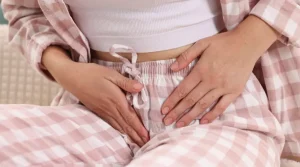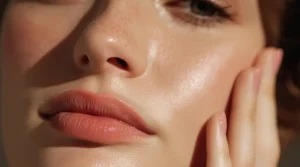Peyronie’s disease is a condition that many men find themselves struggling with but hesitate to discuss openly. Characterized by abnormal curvature of the penis, this disease can lead to discomfort, pain, and sexual dysfunction, affecting a man’s confidence and quality of life.
Fortunately, there is an innovative, non-surgical solution available—P-Shot therapy. This cutting-edge treatment offers men a new hope for managing Peyronie’s disease effectively.
Continue reading to explore what Peyronie’s disease is, the factors that lead to it, its symptoms, and how P-Shot therapy can offer relief and recovery.
What is Peyronie’s Disease?
Peyronie’s disease is a connective tissue disorder that results in the development of fibrous scar tissue, also known as plaques, inside the penis. This buildup of scar tissue causes the penis to curve during an erection, which can be painful and lead to erectile dysfunction.
While it is normal for the penis to have a slight curve when erect, Peyronie’s disease causes a more pronounced and often uncomfortable bend, making sexual intercourse difficult or impossible in severe cases.
How Does Peyronie’s Disease Develop?
While the exact cause of Peyronie’s disease remains unclear, most experts believe it results from repeated injury to the penis. This injury could occur during sexual activity, sports, or even an accident.
The body attempts to heal the microtears or trauma by forming scar tissue. However, unlike normal tissue, scar tissue lacks elasticity, leading to the curvature seen in Peyronie’s disease. Another theory is that genetics may play a role in some cases, with some men predisposed to excessive scar tissue formation.
Age can also be a contributing factor, as the elasticity of the penile tissue decreases over time, making it more vulnerable to injury.
Factors That Can Lead to Peyronie’s Disease
Understanding the factors that contribute to the development of Peyronie’s disease is key to identifying the condition early and seeking appropriate treatment. Several elements play a role in the onset of this condition, and while some can be mitigated, others are beyond control.
- Penile Trauma or Injury. One of the primary causes of Peyronie’s disease is physical trauma to the penis. This can occur during sexual intercourse, sports activities, or an accident. Often, these injuries result in micro-tears in the tunica albuginea—the fibrous sheath surrounding the penile tissue.
Over time, as the body attempts to heal these tears, scar tissue (plaques) forms, which is less flexible than normal tissue. This scar tissue leads to the curvature of the penis, particularly when erect. Repeated or severe trauma increases the likelihood of significant plaque formation, making it a common precursor to Peyronie’s disease.
- Genetic Predisposition. Genetics may play a role in the development of Peyronie’s disease. Men who have a family history of connective tissue disorders, such as Dupuytren’s contracture (a condition affecting the hands), are at a higher risk of developing Peyronie’s disease.
If a close relative has experienced this condition or similar connective tissue disorders, it is more likely that you may experience the same issues, indicating a genetic predisposition to the formation of excess scar tissue.
- Aging. As men age, the risk of Peyronie’s disease increases. This is due in part to the reduced elasticity of penile tissues and the slowed healing process that comes with aging.
Older men are more susceptible to injury, and their bodies may not repair damaged tissue as efficiently as they did in their younger years. As a result, scar tissue can form more easily, and the curvature caused by Peyronie’s disease can become more pronounced.
- Certain Medical Conditions. Underlying medical conditions can also contribute to the development of Peyronie’s disease. Men with conditions such as diabetes, high blood pressure, or high cholesterol are at an increased risk.
These conditions affect blood flow and tissue health, which can impair the body’s ability to heal minor injuries. Inadequate blood circulation and weakened tissue integrity make it easier for scar tissue to form in response to even minor trauma.
- Autoimmune Disorders. Autoimmune disorders, in which the body’s immune system mistakenly attacks its own tissues, may also be a factor in the development of Peyronie’s disease.
In these cases, the immune response can target healthy penile tissue, leading to inflammation and scarring, which eventually contributes to the curvature associated with the condition. Although autoimmune disorders are less common causes of Peyronie’s disease, they highlight the complexity of the condition and the various factors that can lead to its onset.
By understanding these risk factors, men can take steps to protect their health, reduce their chances of developing Peyronie’s disease, and seek early treatment when necessary.


Symptoms of Peyronie’s Disease
The symptoms of Peyronie’s disease can vary depending on the severity of the condition and how long it has been present. However, the most common symptoms include:
- Curvature of the Penis. The most distinctive symptom of Peyronie’s disease is a noticeable bend or curve in the penis during an erection. This curve can vary in severity from mild to extreme, and it can occur in any direction—upward, downward, or sideways.
- Pain During Erections. Men with Peyronie’s disease often experience pain during erections, which can make sexual activity uncomfortable or impossible. This pain may lessen over time, but the curvature and erectile difficulties often persist.
- Scar Tissue or Lumps. The presence of fibrous scar tissue or hard lumps along the shaft of the penis is another hallmark of Peyronie’s disease. These plaques may be felt beneath the skin, and they contribute to the bending of the penis.
- Erectile Dysfunction. This one is a common complication of Peyronie’s disease. The scar tissue and curvature can interfere with normal blood flow, making it difficult to achieve or maintain an erection. Even men who can achieve an erection may find that the shape and rigidity of their penis prevent successful intercourse.
- Shortening of the Penis. In some cases, the presence of scar tissue can lead to a noticeable shortening of the penis. This can occur due to the tissue constriction and lack of elasticity caused by the plaques.
With these symptoms impacting a man’s quality of life, it is clear that finding an effective treatment is essential. One of the most promising solutions available today is P-Shot therapy.
What is the P-Shot?
The Priapus Shot®, commonly known as the P-Shot, is a non-surgical, drug-free treatment designed to enhance male sexual performance and address conditions such as Peyronie’s disease and erectile dysfunction.
The P-Shot uses platelet-rich plasma (PRP), which is derived from the patient’s own blood. This plasma is rich in growth factors that stimulate tissue regeneration, enhance blood flow, and promote healing.
Science Behind It
The PRP used in the P-Shot is created by drawing a small amount of the patient’s blood and processing it to separate the plasma. This plasma, which contains a high concentration of platelets, is then injected into targeted areas of the penis.
Once injected, the PRP stimulates the body’s natural healing processes, encouraging the growth of new, healthy tissue. The P-Shot can be particularly beneficial for men with Peyronie’s disease because it helps break down scar tissue, improves blood flow, and promotes the regeneration of normal, healthy cells.
How P-Shot Can Solve Peyronie’s Disease
P-Shot offers several benefits that make it an effective treatment for Peyronie’s disease:
1. Breaks Down Scar Tissue
One of the main goals of the P-Shot is to break down the scar tissue that causes penile curvature. The growth factors in PRP encourage the healing and regeneration of damaged tissue, helping to reduce the plaques that lead to Peyronie’s disease.
2. Improves Blood Flow
PRP stimulates the growth of new blood vessels, which improves circulation to the penis. This enhanced blood flow can help alleviate the erectile dysfunction that often accompanies Peyronie’s disease and can improve overall sexual performance.
3. Restores Natural Shape
By promoting the regeneration of healthy tissue and breaking down scar tissue, the P-Shot can help restore the penis to its natural shape. Over time, men may experience a reduction in the curvature of their penis, making erections more comfortable and improving their ability to engage in sexual activity.
4. Boosts Sexual Confidence
For many men, Peyronie’s disease leads to a loss of confidence in their sexual performance. The P-Shot helps to restore normal erectile function and reduce the symptoms of Peyronie’s disease, allowing men to regain their confidence and enjoy a satisfying sex life.
5. Minimally Invasive
Unlike surgical options for treating Peyronie’s disease, the P-Shot is a minimally invasive procedure that requires no downtime. Most patients can resume normal activities shortly after this penile injection therapy, making it a convenient option for those seeking non-surgical solutions.


Addressing Peyronie’s Disease
Peyronie’s disease can have a significant impact on a man’s physical and emotional well-being, but innovative treatments like P-Shot offer hope. By breaking down scar tissue, improving blood flow, and promoting tissue regeneration, this erectile dysfunction treatment addresses the root causes of Peyronie’s disease and offers a safe, effective solution.
For men dealing with Peyronie’s disease, P-Shot is more than just a treatment—it’s a way to regain control of their sexual health and quality of life. At Lasting Impression Medical Aesthetics in Fair Lawn, NJ, our experienced team is dedicated to helping men find relief from Peyronie’s disease with cutting-edge treatments like the P-Shot.
Call us now to schedule your appointment today!






